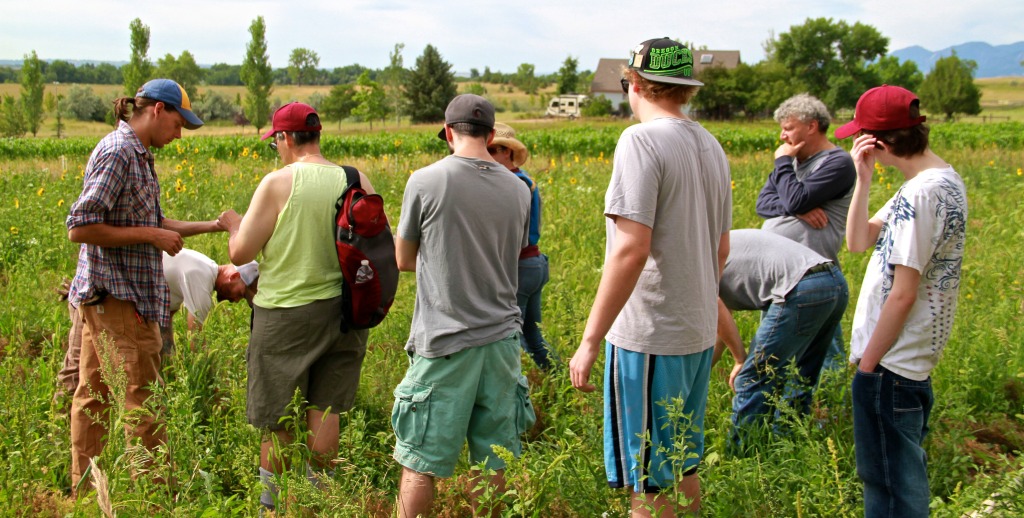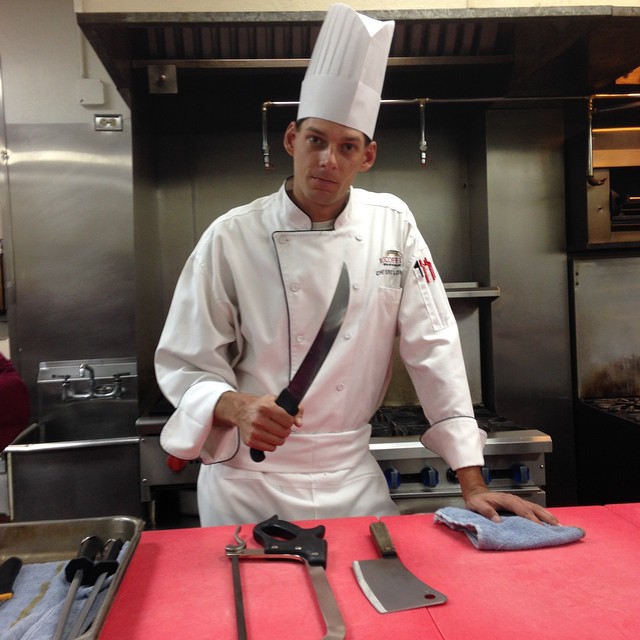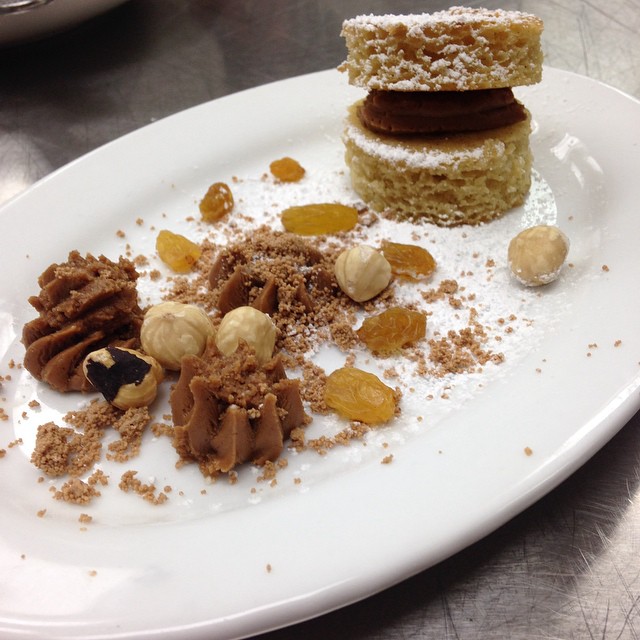By: Ryan Hodros, Culinary Arts Student
This is it. The final block of culinary school, otherwise known as “Farm-to-Table.” This month, we’ve been learning about sustainability and the difference between commodity farming and what I’ve come to call “non-commodity farming.” (This is because other labels like “sustainable,” “organic,” “local,” and so on are poorly defined, and so the best way to define them is to call them “the kind you don’t normally see.”) In addition to that, we’ve learned a ton from Chef Eric about cooking with vegetables as well as butchery and meat preservation. It’s been an interesting block, and I had a lot of fun.

Week Twenty-Five
A great deal of this week was lecture based, which might turn off a lot of the gung-ho “let’s throw all the books away and get in the kitchen” types. But for “education is its own reward” types like me, I really enjoyed it. The highlight of the education was learning about the Monterrey Bay Aquarium’s watch list for seafood, which is a handy guide for telling you what fish is healthy, what fish is poisonous (due to unfit farm-raising practices) and what fish is endangered. But in addition to that, we learned a lot about other agricultural practices, including herbicide and pesticide use, the meat-packing industry’s relationship with the USDA, and pasture-raised poultry vs. commodity poultry. It was a real eye-opener, and while making the switch from a commodity pantry to a non-commodity pantry isn’t one you make overnight, it is definitely a goal I’m hoping to achieve over the next year.
Week Twenty-Six
I kind of hamstrung myself when it comes to describing this week, because the vast majority of it was whole hog butchery, which I already described in detail in another article. But in addition to processing a pig, we also learned quite a bit about the preservation of meat. This included making four different kinds of ham, a variety of cased meats, including mortadella, chorizo, kielbasa, and Italian sausage. Beyond that, we also learned how to make rillettes, which is basically a pork confit (the hocks cooked in lard we made ourselves) that was to die for. Finally, we learned how to make head cheese, which most people grimace at the sight of, but is actually delicious and great on fresh bread.

Week Twenty-Seven
This week started off pretty great, with a tour of Miller Farms and Carrie’s Clucks opening things on Monday and the week turning into a discussion of food sourcing and locality of produce. “Local” is a term that is often hard to define, with many purveyors in the Colorado area considering cities as far away as Salt Lake City “local,” while some Boulder/Longmont area farmers consider “outside city limits” to be too far away. We also dove into “quickfire challenges” in this week, with the challenge to make a vegetable buffet in under an hour, which was an interesting challenge that was also a lot of fun.
Week Twenty-Eight
This was a rough week for me (you’ll see why in a minute). We started planning for our culmination dinners this week, planning out our menus and coming up with a plan for the banquet we planned to serve to faculty, friends, and family. I’m not going to go into detail about our plans, but I will say that we used a great deal of the pork we processed in week twenty-six to create a sort of “voyage du porc,” including cured meats, roasted loin, and soup featuring sausage. The week ended with a simulated restaurant experience that I unfortunately missed because I was knocked out of class with the worst migraine I’ve ever had. My classmates told me it was an interesting experience, learning how foods are cooked 90% of the way in order to make them easier to cook quickly and expertly. Don’t miss those days like I did—you learn a lot.

Week Twenty-Nine
Technically, this week fell into Month Seven, but you’re going to have to wait until next week when I give a rundown of our culmination dinners
This month has been a lot of fun, and despite some setbacks, I had a great time. We’ve finally gotten to the point where we know our way around the kitchen well enough that we don’t have to ask a million questions just to bake bread or sauté veggies. I also know enough about veggies now that putting a side on the plate isn’t something I have to do, it’s something I enjoy. While I wouldn’t want to give up meat, being vegetarian would be much easier if everyone learned what we learned from Chef Eric in the past month. Classroom time at Escoffier is almost done, and we’re about to finish off our culmination and move out into the real world. Wish us luck!

